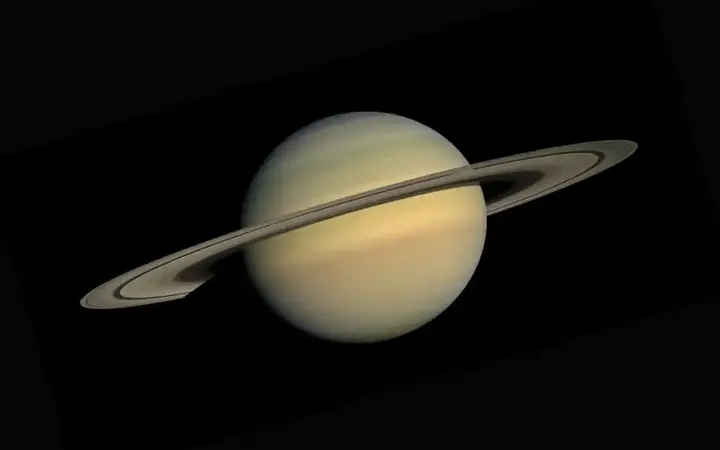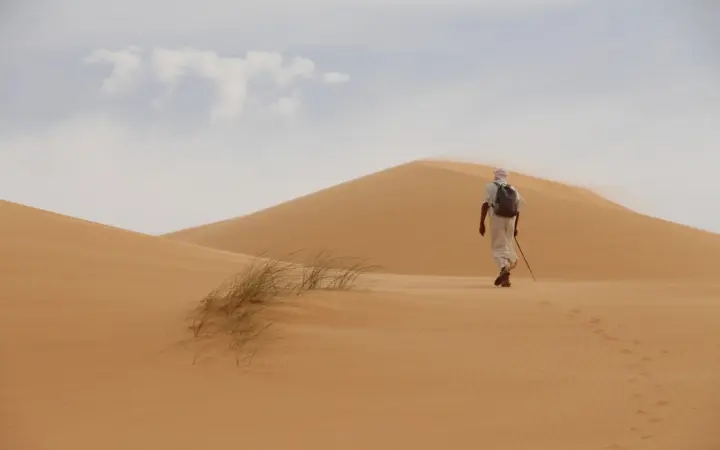The Sahara Dilemma: Are Deserts Vital to the Balance of Our Planet?
Vast tracts of land covered with sand, where there is no life, and sometimes images of deer fantasies in the background of sunsets through the dunes: these are the kind of images that come to mind when someone hears or thinks of the desert.
Show key points
- Despite common perceptions of deserts as barren and lifeless, they are actually unique and essential ecosystems with important ecological functions.
- Deserts are classified into four main types—coastal, hot and dry, semi-arid, and cold—based on their climate and geographical features.
- These harsh environments are home to many specially adapted plant and animal species that cannot survive elsewhere.
- ADVERTISEMENT
- Deserts play a crucial role in global carbon storage, serving as one of the planet’s largest natural carbon sinks.
- Desert sands contribute significantly to the nutrient cycle, even helping sustain distant ecosystems like the Amazon rainforest.
- Around 6% of the world’s population lives in deserts, often forming resilient communities with unique cultural practices.
- Deserts face serious threats from human exploitation and climate change, making their protection vital for biodiversity and global ecological stability.
Regardless of the romance these mental images possess, deserts are largely believed to be one of the most difficult places for any living creature to live.
The apparent lack of life, coupled with prevailing harsh environmental conditions, combined with a frustrating vacuum, has made people consider deserts to be environmentally and economically arid lands. However, there is no shortage of reasons why we consider deserts as unique geographical and ecological features on the planet, and why we should think of these ecosystems as essential to life as we know them.
Recommend
What types of deserts do we have on Earth?
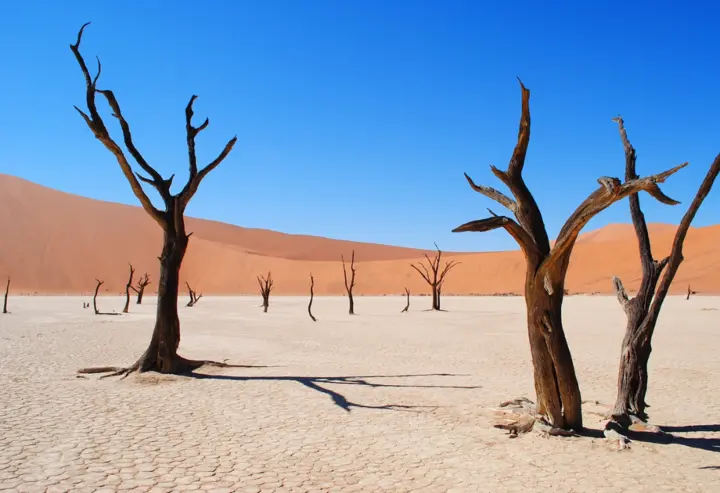
To understand the importance of desert ecosystems, we first need to know the different types of landscapes that fall under this umbrella term.
Real deserts are often defined by the presence of certain environmental conditions, such as less than 25 cm of average annual rainfall and high levels of water evaporation from the soil.
A whole range of habitats and habitats fall under this definition, some more clearly defined as "deserts" than others. The world's deserts are largely classified into four distinct categories:
1. Coastal deserts: It is self-evident that coastal deserts are large areas of sandy areas located next to the sea or ocean, and are usually more widespread on the west coast of the continents. For example, the Atacama Desert in South America.
2. Hot and dry deserts: These are deserts that are characterized by the harshest climatic conditions ever. These are vast tracts of land with undulating sand dunes with an annual rainfall between 0.2 and 20 cm, as well as a very high transpiration evaporation rate. An example is the Sahara Sahara in Africa.
3. Semi-arid deserts: deserts with an average annual rainfall of 20-50 cm, making them relatively less dry and more suitable for vegetation than the previous category. The Great Basin desert in North America is an example of this variety.
4. Cold deserts: Unlike others, they are deserts located in very cold regions, generally located at high latitudes with low rainfall and high drought, such as the Gobi Desert in Central Asia.
Saharas and the services they provide
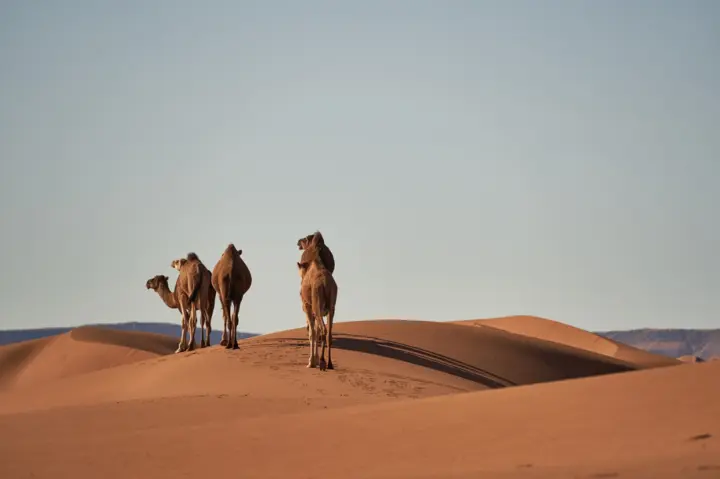
Deserts cover nearly one-sixth of the world's land area and are present on all seven continents. Although life in the deserts is unforgiving, many species of animals and plants have adapted to thrive and live there. Many of these species are unable to survive anywhere else on the planet, suggesting the importance of deserts in preserving global biodiversity.
Even humans have adapted themselves to live in the harsh climatic conditions of deserts. Nearly 6% of the world's population, including some of the world's most marginalized and destitute communities, call deserts their home. These communities, mostly nomadic or semi-nomadic, have developed their unique social and political structures, cultures and customs, and designed a lifestyle suited to these difficult living conditions.
Contrary to expectations, deserts are one of the main carbon storage sites on the planet, as they serve as net carbon sinks, one of the largest on the planet, with an estimated storage of 1 trillion metric tons. Under the current climate change scenario, the current deserts act as a line of defense against global warming.
Desert sands are also known as a major source of nutrients in areas with biodiversity such as tropical rainforests. Although hard to believe, scientists have determined that desert sand particles from Africa helped form and maintain the Amazon rainforest. Particles cross the vast Atlantic Ocean by long-distance travel aboard westbound winds and settle in the Amazon basin in South America, making the soil nutrient-rich and feeding the forests of enormous biodiversity in the Amazon basin. It is believed that if the Sahara no longer exists on the planet, the Amazon rainforest will collapse.
Deserts in the human age
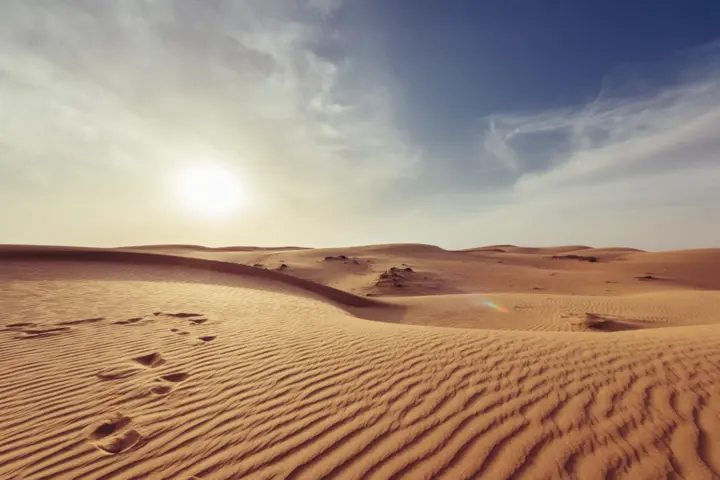
Despite all these vital services provided by deserts, they have not been spared from unsustainable exploitation by humanity. The deserts contain 13 types of the fifteen main mineral deposits, as well as a large amount of mineral oil and natural gas. Many of these resources are harvested in an environmentally unfriendly manner, leading to the overall degradation of these ecosystems.
Large-scale mining, habitat and habitat conversion, and solar power plants have been carried out in the name of making deserts "productive land". However, these choices coupled with climate change have already affected the ecosystem in many harmful ways. Deserts are currently one of the most fragile and threatened ecosystems on Earth.

Although the expansion of deserts into arid or semi-arid regions is alarming for the planet, the complete loss of deserts is neither desirable nor beneficial for the planet. The absence of deserts will not only affect global biodiversity in the form of species extinction, but will also cause catastrophic changes in the lives and livelihoods of the one billion people who inhabit these spaces and affect the global economy.
So the answer to the question we started with is simple: yes. We need deserts on the planet!
![]()
How to learn any language in a short time? 8 practical tips
There’s no quick fix for learning a language, but with steady effort and the right methods—like setting goals, practicing daily, or using apps like Duolingo—you’ll improve with time. Surround yourself with the language and focus on real-life use rather than just grammar. more- ADVERTISEMENT
![]()
The most fascinating discoveries we have made to explore Jupiter
Jupiter’s Great Red Spot, a massive storm lasting centuries, and the mysterious, possibly liquid core make it a planet full of extremes. Its moons—especially Europa with its hidden ocean—offer exciting clues about extraterrestrial life. With Juno and upcoming missions, the future of exploring this gas giant looks thrilling. more- ADVERTISEMENT
![]()
Sacred places in the Andes: 7 secrets of Machu Picchu
Machu Picchu isn't truly the lost city of the Incas, and it's not as forgotten as once believed—locals were living there when rediscovered. Many marvels are hidden underground, and if you're up for a sweaty climb, you can skip the pricey bus and enjoy epic views for free. more- ADVERTISEMENT
![]()
LI-FI: where the Internet travels at the speed of light
LI-FI, created in 2011 by Prof. Harald Haas in Scotland, uses light instead of radio waves for data transfer. It offers ultra-fast speed and strong security, making it ideal for sensitive environments. Despite its promise, challenges like high costs and dependency on constant lighting limit its widespread use. more- ADVERTISEMENT
![]()
Sand and fog skies: a harsh introduction to Mauritania
Nouadhibou may appear harsh and chaotic, yet its dusty markets and joyful children reveal a community full of resilience and warmth. Despite poverty and challenges, the city radiates human spirit and hope, offering visitors an unforgettable glimpse into a life built on adaptation and cooperation. more- ADVERTISEMENT
![]()
Negotiation skills for successful personal and practical relationships
Negotiation isn’t just for business or politics—it’s a vital life skill. It’s about finding win-win outcomes using communication, persuasion, and emotional intelligence. Whether you're a parent, partner, or student, mastering this skill strengthens relationships and helps navigate daily challenges with understanding, planning, and strategic thinking. more- ADVERTISEMENT
![]()
Uranus may have a hidden ocean: the discoveries of the James Webb Space Telescope
The James Webb Space Telescope may have discovered a hidden ocean beneath Uranus’ moon Ariel, sparking excitement about possible extraterrestrial life. Its powerful infrared technology revealed water ice, salts, and organics—clues to a potentially habitable environment under the icy surface. more- ADVERTISEMENT
![]()
How to outperform everyone by acting like a CEO
Success isn't accidental—it’s built through CEO-like habits. Think strategically, decide with confidence, build strong networks, and manage time smartly. These executive behaviors shape a mindset that helps you grow, lead, and stand out in your career. Start adopting them now to pave your path to excellence. more- ADVERTISEMENT
![]()
7 physical cues that can help you read someone like an open book
Body language reveals more than words—handshakes, smiles, and even foot movements hint at confidence, stress, or honesty. A dominant handshake may suggest control; sincere smiles reach the eyes; fidgeting signals anxiety. Pay attention to these subtle cues, but always consider context—it's the key to truly understanding someone. more- ADVERTISEMENT
![]()
A book that may interest you: pistachio theory
A book that might interest you - Pistachio Theory more- ADVERTISEMENT













